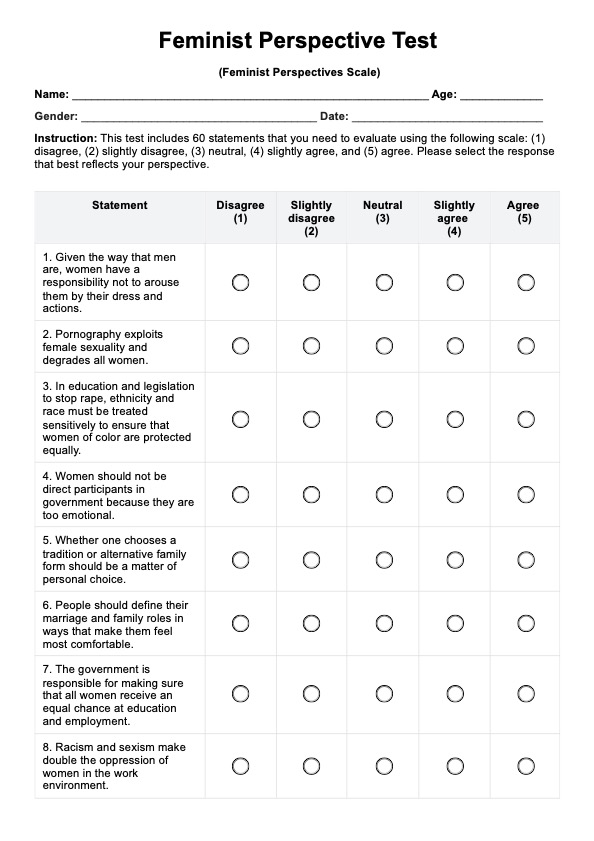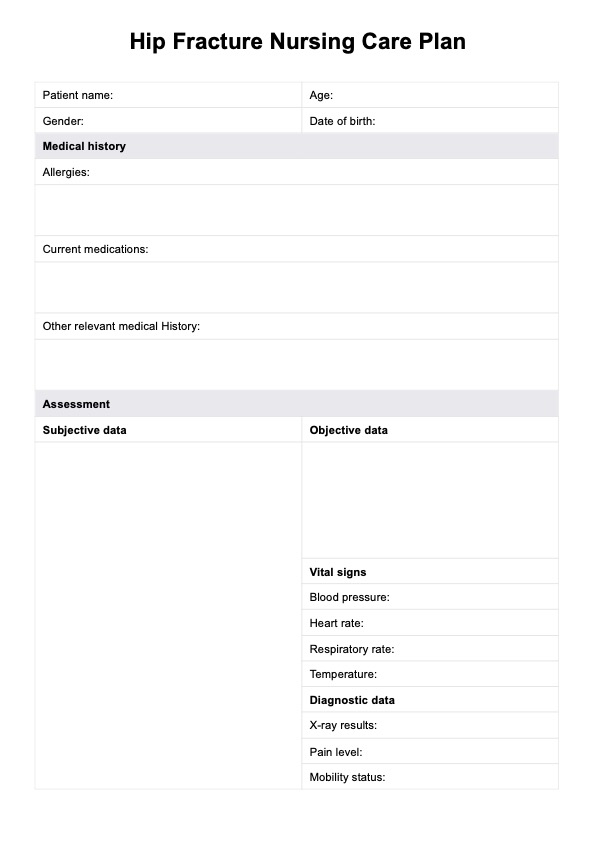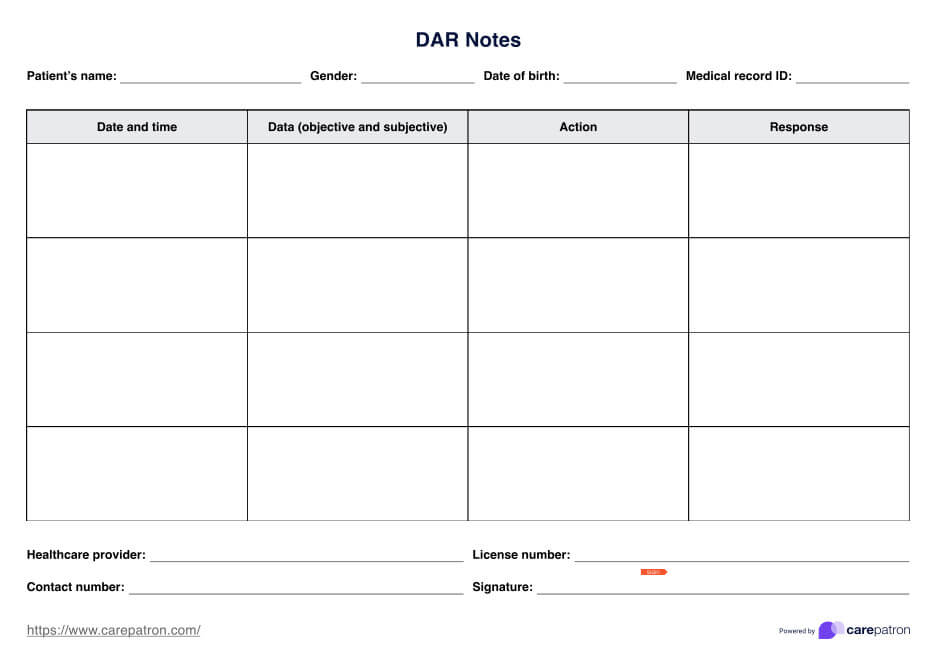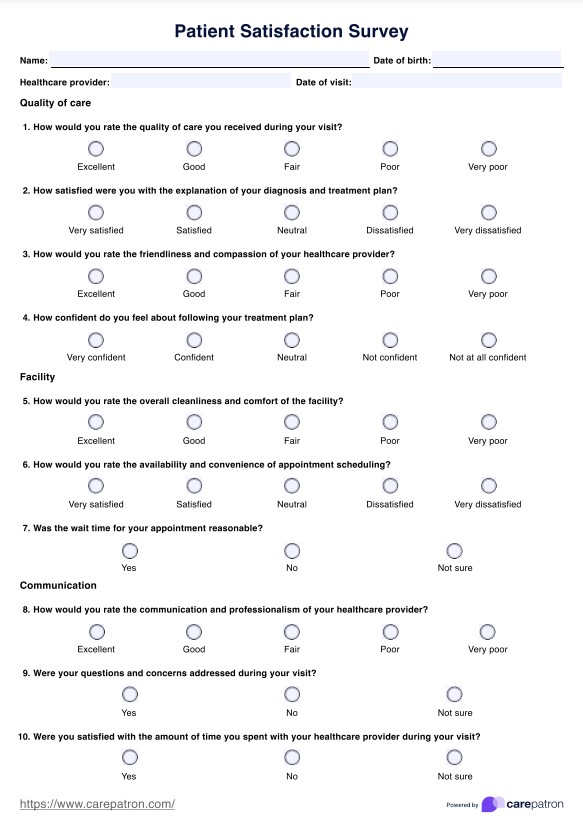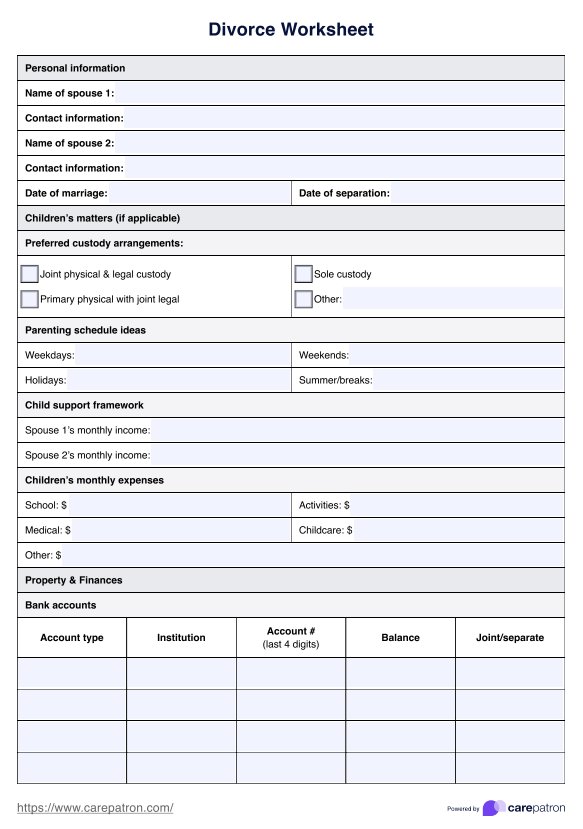Printable Food Pyramid
Introduce balance to your patient's diet with our printable Food Pyramid. Nourish their bodies with essential nutrients effortlessly.


What is a food pyramid?
Have you ever contemplated the optimal selection of foods for sustaining a healthy lifestyle? That's where the food pyramid comes in — a tool designed to break down the complexities of nutrition.
The food pyramid serves as a structured visualization outlining the recommended daily intake of various food groups essential for fostering a balanced diet conducive to overall well-being.
Fundamentally, the food pyramid categorizes foods into distinct groups based on their nutritional attributes, encompassing fruits, vegetables, grains, proteins, and dairy products. Each group offers unique nutritional benefits for supporting bodily functions and promoting health.
The overarching objective of the food pyramid is to advocate for healthy eating practices by encouraging individuals to incorporate foods from all food groups into their daily diet. This approach ensures a diversified intake of essential nutrients, including vitamins, minerals, and macronutrients, necessary for sustaining optimal health.
By adhering to the guidelines outlined in the food pyramid, individuals can strive for dietary balance, thus optimizing their nutritional intake. Embracing a varied selection of foods from different food groups enhances nutritional adequacy. It cultivates a holistic approach to nourishment, fostering vitality and wellness. Eating healthy foods is essential for maintaining optimal health and preventing chronic diseases.
Printable Food Pyramid Template
Printable Food Pyramid Example
What does a food pyramid show?
The food pyramid mainly illustrates the five food groups for a well-rounded diet.
Fruits
The fruits section of the food pyramid promotes healthier eating by encouraging individuals to consume various fruits daily. Incorporating fruits into your diet supports healthy habits and promotes a balanced diet. Aim for at least 2-4 servings of fruits daily for a balanced meal and to foster a healthy lifestyle.
Vegetables
Vegetables play a crucial role in the food pyramid, emphasizing their importance in providing essential nutrients and antioxidants. Consume various colorful vegetables daily, including leafy greens and cruciferous vegetables. Aim for 3-5 servings of vegetables.
Grains
The grains section emphasizes the essence of consuming whole grains, such as brown rice, whole wheat bread, and oats. Whole grains provide fiber, vitamins, and minerals, contributing to a balanced diet.
Protein
Protein-rich foods are vital for building and repairing tissues. It also supports immune function and muscle health. Add a variety of protein sources like lean meats, fish, beans, and nuts to your diet. Aim for 2-3 servings of protein-rich foods daily to meet your body's needs.
Dairy or alternatives
The dairy section of the food pyramid emphasizes the importance of calcium-rich dairy foods for bone health. Select low-fat or non-fat dairy products or fortified plant-based alternatives like almond or soy milk. Aim for 2-3 servings of dairy or alternatives daily for a healthy diet.
How does our Printable Food Pyramid work?
Our Printable Food Pyramid serves as a visual guide to promote healthier eating habits and encourage a balanced diet. It breaks down the food groups into recommended daily servings, emphasizing the importance of variety and moderation. You may use this with the Food Diary and Food Calorie Charts to help you with mindful eating and meal planning.
Step 1: Download the template
Download the Printable Food Pyramid template from the resources we provide. Click "Use Template" to open it in the app, which lets you customize its contents and share it with others. You can also save a plain PDF copy on your device by pressing "Download"—a printed copy may be the better choice if your clients are older adults.
Step 2: Find good placement
Advice your client to place the printed food guide pyramid in a visible location such as their refrigerator or kitchen cabinet, where you frequently prepare meals.
Step 3: Use the pyramid as reference
Refer to the pyramid when planning meals and snacks to incorporate food groups in appropriate serving sizes. Remind your client to refer to these dietary guidelines as well.
Step 4: Adjust servings
Customize serving sizes based on individual needs, considering age, gender, activity level, and specific health conditions.
Step 5: Explore food options
Encourage your client to explore a variety of foods within each food group to maximize nutrient intake and maintain a balanced diet. This way, they do not feel like they are out of choices when food shopping.
Step 6: Form healthy habits
Help your client incorporate the principles of the Printable Food Pyramid into their daily routine to establish healthy eating habits and promote a healthier lifestyle. These habits include moderation and self-control. Give them nutrition tips to help keep them on the healthy eating path.
Step 7: Create balanced meals
Try to create balanced meals by including foods from each food group, aiming for various colors, textures, and flavors to enhance the dining experience. Doing this ensures that your client receives the necessary energy and nutrients.
What are the benefits of using a food pyramid?
Understanding the benefits of utilizing a food pyramid can significantly impact dietary choices and overall health.
- Guidance for balanced nutrition: The food pyramid provides clear guidance on the appropriate proportions of various food groups, promoting a balanced diet essential for overall health and well-being.
- Promotes healthy eating habits: By emphasizing the importance of consuming multiple foods from different groups, the food pyramid encourages individuals to adopt healthier eating habits, leading to improved nutrition and vitality.
- Nutritional education: It teaches individuals about the nutritional value of different foods and empowers them to make informed dietary choices.
- Prevents nutritional deficiencies: Following the recommendations of the food pyramid helps prevent dietary deficiencies by ensuring adequate intake of essential nutrients necessary for optimal health.
- Supports disease prevention: A diet based on the principles of the food pyramid can lower the risk of chronic diseases such as heart disease, diabetes, and obesity, as it encourages the consumption of nutrient-rich foods and limits the intake of processed and unhealthy options.
How will our template help nutritionists and dietitians?
Our Printable Food Pyramid template offers practical advantages for nutritionists and dietitians in their practice. Here are some key benefits:
- Educational tool: It simplifies complex nutritional concepts, making it easier to educate clients about balanced diets and essential food groups.
- Meal planning: It aids in designing personalized meal plans that ensure clients receive all necessary nutrients by following the recommended food group servings.
- Client engagement: It enhances client interaction and engagement by providing a tangible, visual guide that clients can use at home.
- Nutritional assessment: It assists in assessing clients' dietary habits and identifying areas for improvement based on the structured food group guidelines.
Commonly asked questions
Food pyramids are crucial because they provide essential nutrition information and guidelines for maintaining a healthy diet.
You can incorporate food pyramid recommendations by planning recipes with various foods from each food group to ensure a balanced diet for your family.
You can find resources online, in books, and from reputable health organizations that offer comprehensive information on food pyramids and healthy eating.


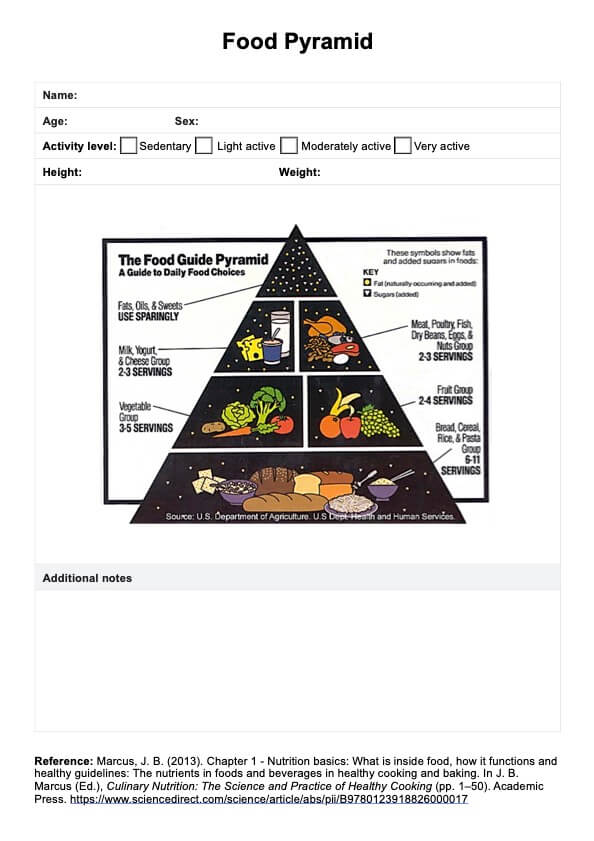
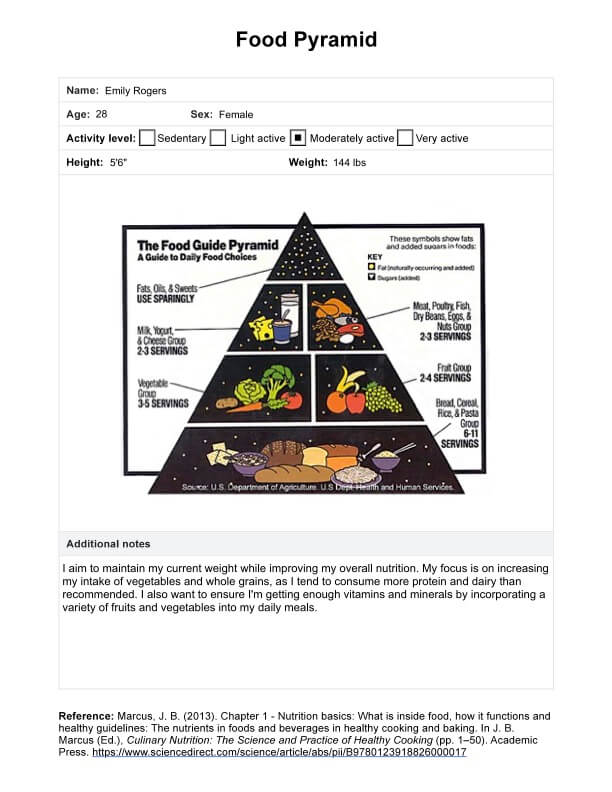

















-template.jpg)















































































